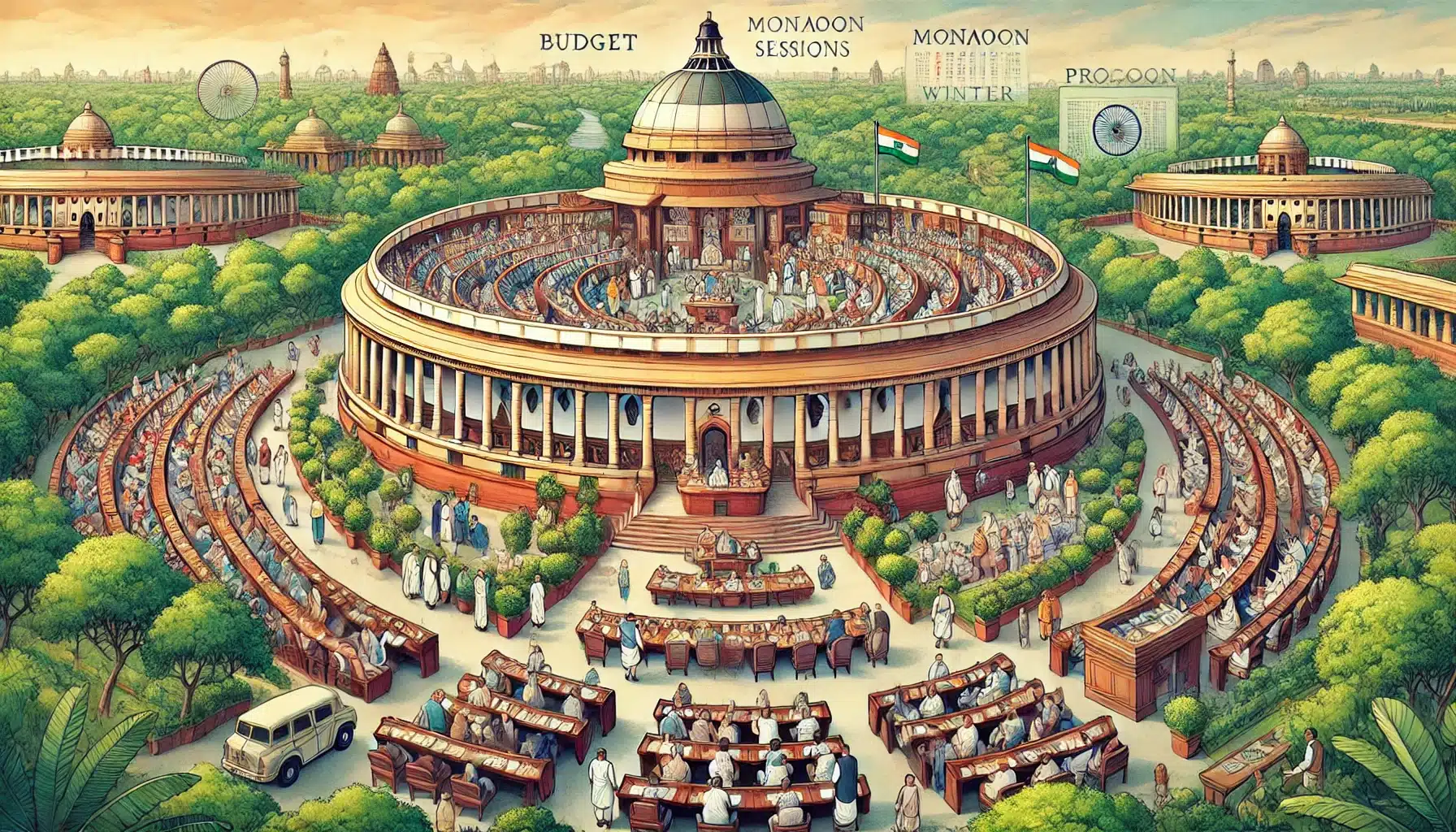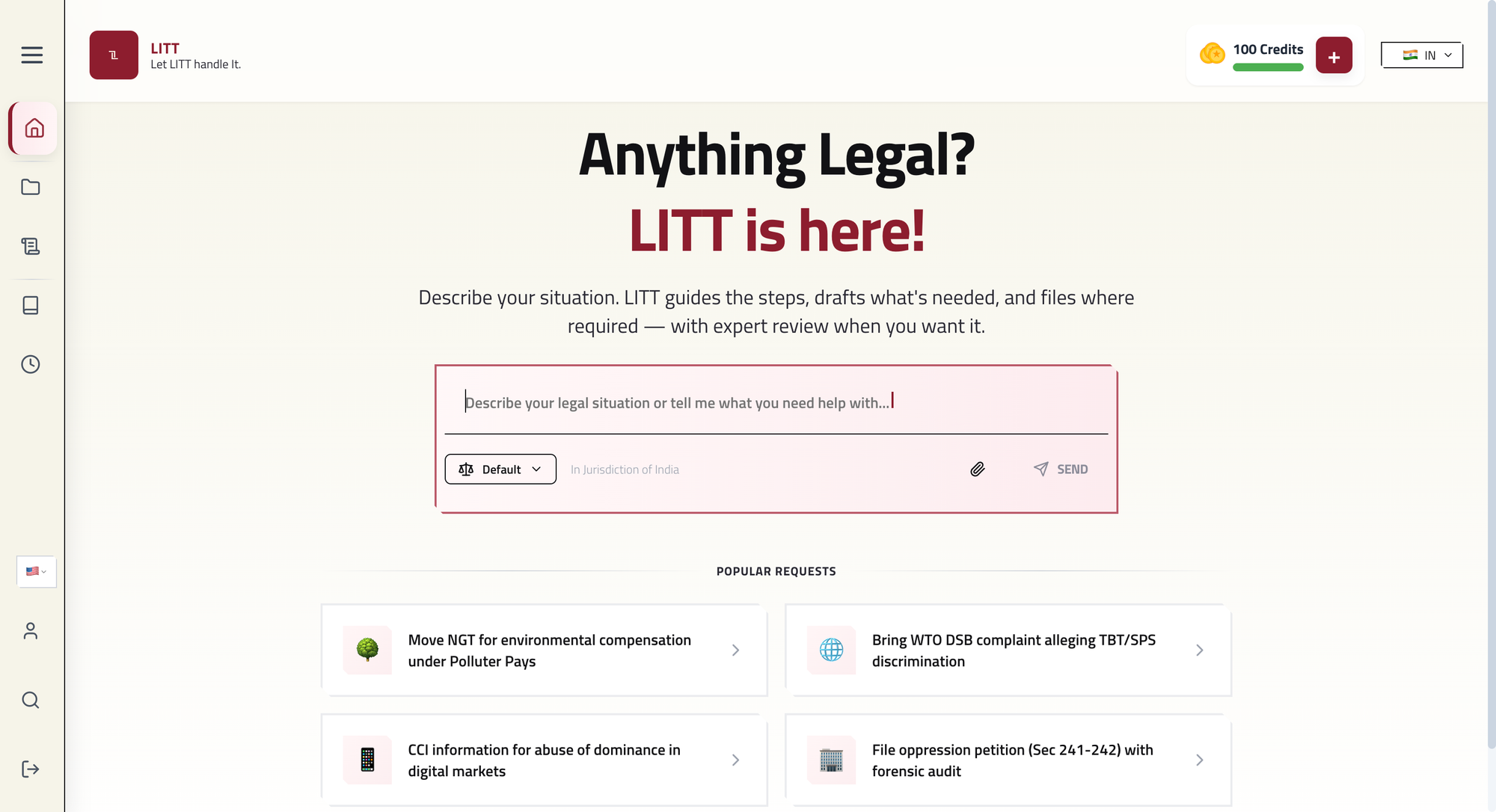The Indian Parliament, a cornerstone of democracy, convenes in three sessions annually: the Budget Session, Monsoon Session, and Winter Session. These sessions, held at Sansad Bhavan, facilitate legislative business, debates, and discussions on national issues. The President of India calls each sess

Hallucination-resistant legal AI (context engineered)
Introduction
- A cornerstone of democratic values in any representative democracy is the Parliament, which provides a forum for discussion on matters of social and civic significance in any popular democracy.
- Parliament can be seen as a political instrument for realizing Mahatma Gandhi’s vision of democracy as the art and science of harnessing all resources for the common good.
- The Parliament of India is the supreme legislative body of the Republic of India. There are two houses in this bicameral legislature: the Lok Sabha (House of the People) and the Rajya Sabha (Council of States).
- The parliament members meet at Sansad Bhavan which is also known as the Parliament House, is a distinctive architectural landmark in New Delhi. Sansad Bhavan witnessed key moments in India’s history, including the adoption of the Constitution in 1950. It stands as a testament to India’s democratic ideals and the power of collective decision-making.
What is the session of Parliament?
- The time when both the houses of the Indian Parliament meet to conduct parliamentary business is known as a “Session of Parliament“. It is the platform used by the elected representatives to present essential issues and illuminati new paths for India’s growth.
- The government of India calls the Parliament into session. There is no set legislative calendar in India. Conventionally, Parliament meets for three sessions annually, as stipulated by the Constitution
- A session of the Indian Parliament is the period during which both Houses meet regularly to conduct legislative business.
- The Indian Constitution and parliamentary rules govern sessions of the Parliament.
Who calls for a meeting?
- Periodically, the President calls a meeting of each House of Parliament. Each House of Parliament may occasionally be called to a meeting by the President at any time and location he deems appropriate.
- Parliament must convene at least twice annually, with a maximum interval of six months between sessions.
Types of sessions of Parliament
1. Budget Session (1st Session): This is the most important & longest session. This session focuses on budgetary matters, financial bills, and other legislative business. The budget session also outlines the government’s revenue and expenditure plans for the upcoming fiscal year. The session begins towards the end of January and concludes by the end of April or the first week of May.
2. Monsoon Session (2nd Session): This session looks into the matters of national issues, security of government policies and legislative proposals. Typically, it begins in July and concludes in August. It takes about three weeks to finish.
3. Winter Session (3rd Session): Covers a wide range of topics, including bills, discussions, and debates. The house is in session during November and December. It is the shortest session of all.
The legislative landscape of India is significantly shaped by these sessions. In addition to these sessions, the President of India has the authority to call extra sessions of Parliament, if necessary. Usually, the legislature is called into these extraordinary sessions to handle extraordinary or urgent situations.
Note: Last Session in the Old Parliament Building (September 2023), Indian Prime Minister Narendra Modi and his cabinet colleagues attended the last sitting in the old parliament building. Future sessions will now be held at a newly constructed building (Sansad Bhavan).
Components of session of Parliament
There are two components of a session of the Indian Parliament:
- Meetings: A session of Parliament consists of multiple meetings, each typically lasting for a day. These meetings collectively form the broader timeframe of a session. During meetings, parliamentary business, debates, and legislative activities take place.
- Sittings: Every sitting that takes place during a given time frame is referred to as a session. The actual days that members of Parliament meet to do business are referred to as sittings. Debates, votes, and other legislative proceedings take place during each session.
Adjournment
- The adjournment of a session in parliamentary terms refers to the formal suspension or conclusion of the proceedings during a specific period. When a session is adjourned, it means that the legislative business, debates, and other activities are temporarily halted.
- The session can be adjourned for various reasons, such as breaks between sittings, holidays, or unforeseen circumstances.
- Moreover, Adjournment sine die refers to the termination of a parliamentary sitting for an indefinite period. In practical terms, when the House adjourns without specifying a date for reconvening, it is considered adjournment sine die. The authority to adjourn sine die rests with the presiding officer of the House.
- The presiding officer (such as the Speaker in the Lok Sabha or the Chairman in the Rajya Sabha) has the authority to declare an adjournment as well as adjournment sine die.
- Also, after the Adjournment sine die, the presiding officer (such as the Speaker or Chairman) retains the authority to convene a sitting of the House at any time. This flexibility allows for urgent matters or unforeseen situations to be addressed promptly.
Prorogation
- It refers to the formal suspension or ending of a session of Parliament. Under Article 85(2)(a) of the Indian Constitution grants the presiding officer (such as the Speaker in the Lok Sabha or the Chairman in the Rajya Sabha) the power to prorogue the session.
- Prorogation ends the House’s sitting as well as its session.
- The President usually sends out a notice for the prorogation of the session a few days after the presiding officer adjourns the House sine die. But while the House is in session, the President has the authority to prorogue the session.
- Furthermore, “recess” refers to the time between a House’s prorogation and its reassembly in a new session. In essence, this is the amount of time that separates the two sessions that occur.
- Prorogation formally concludes the parliamentary proceedings, and it’s distinct from adjournment, which is a temporary suspension within a session.
Dissolution
- Dissolution of parliament refers to the formal termination of a legislative assembly (or parliament) with the simultaneous end of service for all its members. By the Indian Constitution, only Lok Sabha can be dissolved as the Rajya Sabha cannot be dissolved because it is a permanent House.
- Dissolution puts an end to the current House’s existence, and after general elections, a new House is established.
- Furthermore, there are two possible methods that the Lok Sabha could be dissolved:
1. Automatic Dissolution: Occurs when the Lok Sabha completes its five-year term (or any extension during a National Emergency). The dissolution is automatic and doesn’t require any specific action.
2. Dissolution by Parliament: According to Article 85 of the Indian constitution, the President may dissolve the Lok Sabha on the Prime Minister’s recommendation. The President has the authority to dissolve the Lok Sabha even before its normal tenure ends. Once the President decides to dissolve it, the dissolution becomes irrevocable.
Conclusion
A session of the Indian Parliament is an important forum for discussion, debate, and legislation when elected officials come together. Important elements include sittings and adjournments, prorogation and adjournment procedures. These meetings influence the laws, policies, and advancement of the country. They are the main tools that allow the Parliament to operate efficiently, supporting the nation’s democratic progress and the achievement of its developmental goals.


